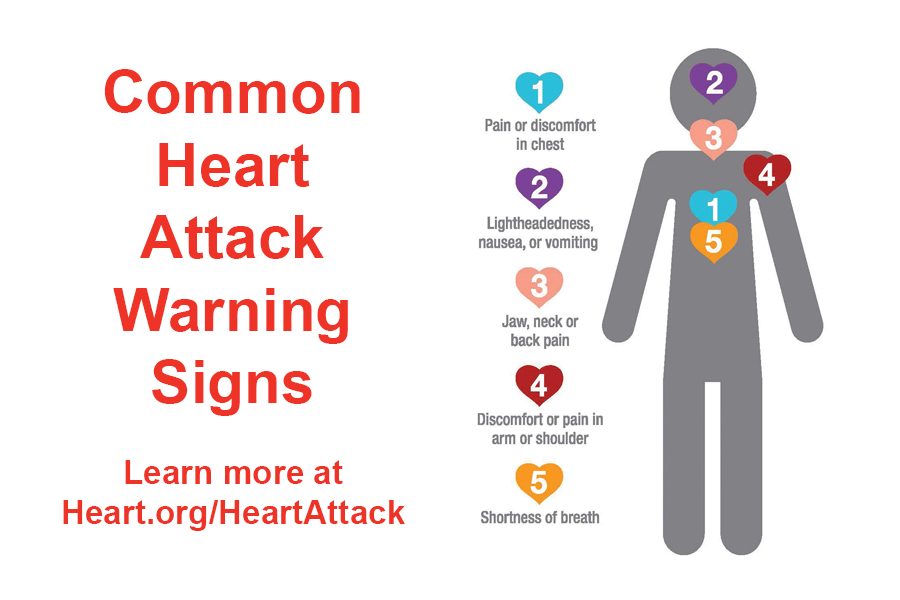
Home » Even in a pandemic, donʼt delay treatment for heart attack symptoms
Even in a pandemic, donʼt delay treatment for heart attack symptoms

February 16, 2021
February is American Heart Month, and the American Heart Association is marking the 57th annual celebration with a sobering message for the Covid-19 era.
Don’t let fear of the virus keep you from seeking help if you are having symptoms of a heart attack. The hospital is the place to be.
Time is muscle saved in the cardiac world.
Fear of the virus is legitimate, but it is a matter of risk, said Dr. John R. Matheson, emergency medicine physician at Kadlec Regional Medical Center in Richland. An untreated heart attack is more dangerous than exposure to the virus.
“If you wait, you can miss the opportunity to get the best outcome,” he said.
By “best outcome,” he means stopping the heart attack in time to prevent death or severe heart damage.
The good news is Tri-City emergency rooms are part of the Washington Department of Health’s Emergency and Cardiac Health System.
Kadlec and Trios Health in Kennewick are both Level 1 Cardiac Centers, the top tier. Lourdes Medical Center in Pasco and Prosser Memorial Hospital are Level II hospitals.
The ECS system was established by a 2010 law to prevent death due to heart attack, cardiac arrest and stroke by raising standards of care for heart attack victims in emergency rooms. Heart disease remains the leading cause of death for Americans.
Under the ECS program, hospitals are reevaluated every three years. Trios renewed its Level I cardiac rating in December, along with its Level II rating for stroke care.
Level 1 hospitals must be ready to diagnose and treat cardiac emergencies 24 hours a day, seven days a week. Cardiac teams must be available within 30 minutes of being notified of a patient in need. The clock can start ticking when a patient is en route by ambulance or private vehicle.
Hospitals are measured by how quickly they perform tests to detect heart attacks and how fast they act to treat the condition. They are even measured on how often they give flu shots – which is nearly all the time.
At a Level 1 hospital, patients are evaluated by nurses. If a heart attack is suspected, either at the door or in an ambulance, the hospital activates its cardiac system. Patients get an EKG.
If the EKG shows a heart attack, the patient goes to the cardiac catheterization lab. A specialist places a catheter in the heart to see where the blockage is happening. The same specialist opens the vessel, stopping the heart attack in progress.
If it is done soon enough, it can prevent the blockage from causing more damage or death.
That is why it is so important to seek treatment as soon as possible, said Matheson, who said Covid-19 concerns are a real deterrent to seeking health. Delays can be tragic, he said.
Pursuing Level 1 cardiac certification is a complicated commitment, said Bryson Casale, stroke and trauma coordinator at Trios. To earn the highest rating, hospitals must demonstrate they provide the right care and document results.
“It’s not easy to get designated through the state. There is an application that is not easy. You have to prove you’re performing at these standards,” he said. Hospitals must meet quality standards and constantly review their cases.
The payoff for patients is emergency rooms that stand ready to respond to the hundreds of heart attacks that strike Tri-Citians each year.
Walk-in patients will typically go to their nearest emergency room. But first responders will send patients to Level 1 hospitals with PCI capabilities, which stands for Percutaneous Coronary Intervention or angioplasty.
Trios has seen Oregon patients bypass their own hospitals to get treatment at the PCI-capable one. Cooperation among hospitals and the people responding to emergencies is the key.
“We can get the ball rolling for the patient before they get to the door, including transmitting EKGs (from ambulances),” he said. “It’s a pretty smooth process.”
Matheson, of Kadlec, said being a Level 1 facility is important, but he discourages people from driving past nearby emergency rooms.
Ideally, patients should call 911, but the key is to get to the nearest emergency room fast.
“You need to get in quickly,” he said.
Kadlec had a heart attack mortality rate of 13.7 based on 423 cases between July 1, 2016, and June 30, 2019, according to Washington Hospital Quality, which measures hospital outcomes. The lower the number the better.
Trios’ rate was 12.9, with a sample size of 165 over the same three-year period. The Lourdes sample size was too small to generate an index.
The national average is 12.7, and Washington’s statewide average is 13.0.
According to the American Heart Association figures from before the Covid-19 pandemic, there are 605,000 new and 200,000 recurrent attacks each year. The average age for a first heart attack is 65.6 years for men and 72 years for women.
Heart attacks are one of the 10 most expensive conditions to treat.
Health Care
KEYWORDS february 2021





